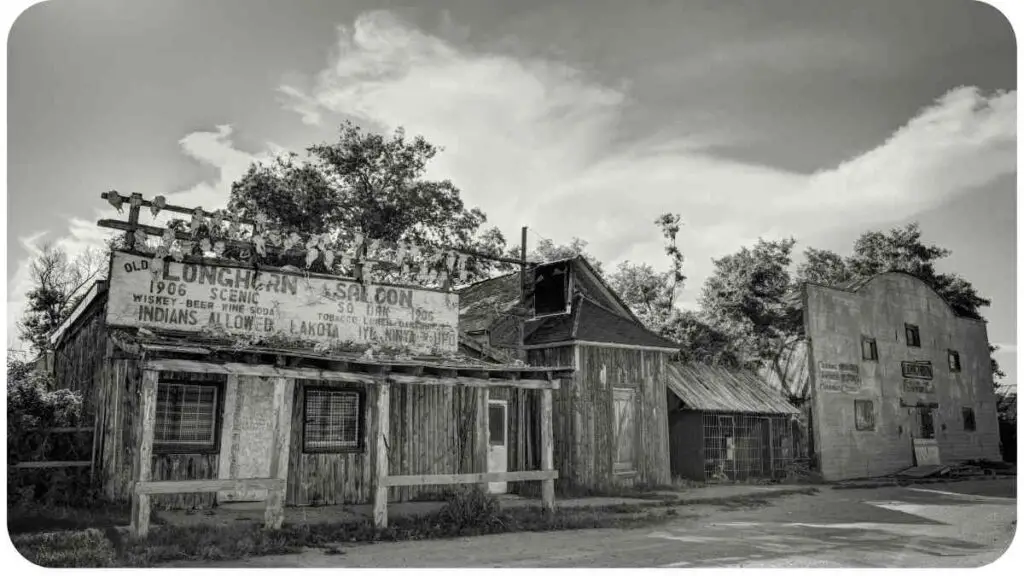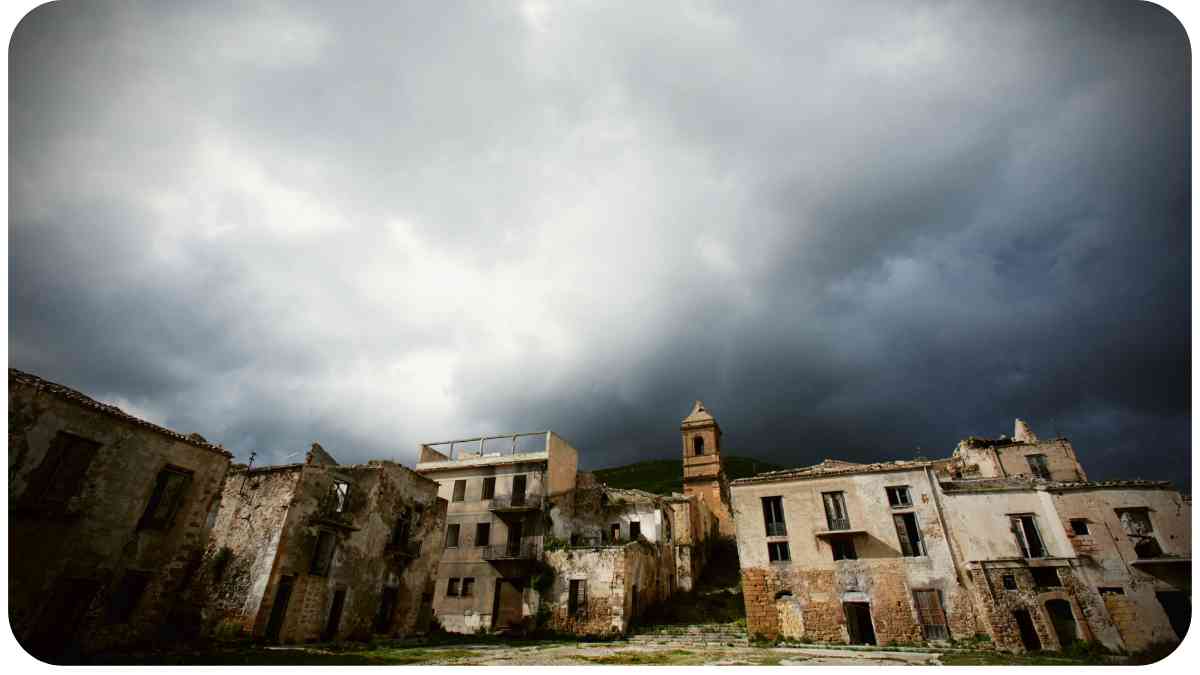Have you ever dreamed of stepping back in time and discovering hidden treasures in abandoned towns? Welcome to the fascinating world of ghost town exploration! As a seasoned treasure hunter and a passionate adventurer, I have gathered extensive experience and expertise in unearthing the history and secrets of these forgotten places.
In this article, I will share with you my insider tips and tricks for an unforgettable ghost town exploration journey. So, grab your gear and let’s embark on this thrilling adventure together!
| Takeaways |
| Importance of research in treasure hunting |
| Safety precautions for exploring ghost towns |
| Gear and equipment necessary for exploration |
| Strategies for identifying promising areas |
| Ethical practices for preserving ghost towns |
| Tips for documenting and sharing findings |
2. Understanding Ghost Towns
2.1 A Brief History of Ghost Towns
Ghost towns hold the remnants of once-thriving communities that have now fallen into abandonment. These towns often emerged during periods of economic prosperity, fueled by mining booms, frontier expansions, or changes in transportation routes. However, when these factors shifted, many businesses shuttered, families moved away, and the towns were left forgotten, frozen in time as ghostly shadows of their former selves.
Exploring the remnants of bygone eras, this article dives deep into the Wild West’s ghost towns, unraveling their intriguing stories and the echoes of a once vibrant past.
2.2 What Defines a Ghost Town?

What exactly classifies a place as a ghost town? While the definition can vary, a ghost town generally refers to a deserted settlement that once experienced human habitation but now stands eerily abandoned. These towns exhibit a compelling blend of history, mystery, and nostalgia, drawing adventurers and treasure hunters in search of hidden gems and untold stories.
2.3 Popular Ghost Towns around the World
Throughout the globe, numerous ghost towns offer endless possibilities for exploration. From the wild west in the United States to the desolate ruins nestled among remote mountains, the allure of these places is truly captivating. Here are some famous ghost towns and their locations:
| Ghost Town | Location |
| Bodie, CA | California, USA |
| Pripyat | Chernobyl, Ukraine |
| Kolmanskop | Namibia |
| Rhyolite | Nevada, USA |
| Oatman | Arizona, USA |
3. Preparing for a Ghost Town Exploration
Before embarking on your ghost town exploration adventure, thorough preparation is key. By equipping yourself with the necessary knowledge and gear, you’ll maximize your chances of uncovering fascinating artifacts and experiencing the true essence of these abandoned towns.
Delve into the world of abandoned buildings with this guide, offering insights on uncovering hidden treasures within forgotten structures. Discover the allure and challenges of this unique form of treasure hunting.
3.1 Researching and Planning
To make the most of your expedition, start by researching the ghost town you intend to explore. Dive into its history, find maps or blueprints if available, and gather any information that can inform your adventure. Look for local archives, historical societies, or even reach out to historians who specialize in the area.
3.2 Essential Gear for Ghost Town Explorations
To ensure a safe and successful exploration, be sure to pack the essential gear. Here are some items that should not be left behind:
| Gear | Purpose |
| Sturdy Hiking Boots | Protect your feet from rough terrain and potential hazards. |
| Headlamp | Illuminate dark interiors and ease your exploration in low-light conditions. |
| First Aid Kit | Attend to minor injuries and be prepared for unexpected accidents. |
| Camera | Capture stunning visuals and document your finds along the way. |
3.3 Safety Precautions to Consider
While ghost town exploration can be an exhilarating endeavor, it’s crucial to prioritize safety during your adventure. Here are some safety precautions to keep in mind:
- Always inform someone about your plans: Before setting off on your exploration, let a trusted friend or family member know about your itinerary and expected return time.
- Dress appropriately: Wear comfortable, layered clothing suitable for the weather conditions, and don’t forget a hat and sunscreen to shield yourself from the sun.
- Stay hydrated and nourished: Carry an adequate supply of water and snacks to keep your energy levels up during your exploration. It’s important to maintain both physical and mental stamina.
- Watch your step: Ghost towns often feature deteriorated structures and uneven terrain. Be cautious with your footing and watch out for hidden hazards such as rusty nails or loose floorboards.
Embark on a spine-chilling journey through America’s most haunted ghost towns. This article recounts eerie tales and paranormal experiences, shedding light on the darker side of these abandoned settlements.
Table: Must-Have Gear for Ghost Town Explorations
| Gear | Purpose |
| Sturdy Hiking Boots | Protect your feet from rough terrain and potential hazards. |
| Headlamp | Illuminate dark interiors and ease your exploration in low-light conditions. |
| First Aid Kit | Attend to minor injuries and be prepared for unexpected accidents. |
| Camera | Capture stunning visuals and document your finds along the way. |
| Water Bottle | Stay properly hydrated throughout your exploration. |
| Snacks | Maintain energy levels with nutritious snacks. |
| Map or GPS device | Navigate efficiently and avoid getting disoriented. |
| Insect repellent | Ward off mosquitos and other pests present in the area. |
4. Navigating Ghost Towns
Exploring ghost towns requires a keen eye for detail and an adventurous spirit. Each structure within these abandoned communities holds untold stories and potential treasures waiting to be discovered. By understanding the layout and recognizing the various types of structures you may encounter, you can maximize your chances of finding hidden gems.
4.1 Exploring Ghost Town Structures
From dilapidated houses to crumbling saloons, ghost towns are replete with structures that offer a glimpse into their former glory. Take your time to inspect each building, paying attention to architectural styles, remnants of furniture, and any artifacts left behind.
4.2 Understanding the Layout
Ghost towns often follow a logical layout that reflects the needs of the community during their heyday. Look for signs of a central business district, residential areas, and public buildings. By understanding the town’s layout, you can gain insights into the daily lives of its inhabitants and narrow down potential treasure hunting spots.
Step into the desolate landscapes and poignant history of once-thriving towns. Uncover the remnants of prosperity and the echoes of lives lived, now frozen in time within these abandoned ruins.
4.3 Unearthing Hidden Gems
While exploring ghost towns, keep your eyes peeled for hidden caches or buried artifacts. Many times, treasures were concealed for various reasons, and their location may have been lost in time. Use your intuition, knowledge of historical practices, and even metal detectors to uncover these hidden gems.
Table: Types of Structures Found in Ghost Towns
| Structure | Description |
| Abandoned Houses | Residential structures left vacant and often in a state of disrepair. |
| Saloons | Gathering places that once catered to the social and recreational needs of townsfolk. |
| General Stores | Retail establishments where settlers acquired necessary provisions. |
| Churches | Reverential buildings serving as spiritual centers for the community. |
| Schools | Educational institutions that shaped the minds of children in the town. |
5. Tips for Successful Treasure Hunting

Treasure hunting in ghost towns is not just about stumbling upon valuable artifacts; it’s an art that requires a strategic approach and a keen eye. To increase your chances of finding hidden treasures, here are some valuable tips:
Unearth the enigmatic stories and enduring legends surrounding ghost towns. This in-depth exploration unveils the mysteries behind these deserted settlements, where the past whispers secrets and tales of a bygone era.
5.1 Identifying Promising Areas
While exploring a ghost town, certain areas are more likely to hold treasures than others. Look for spots where community gatherings or businesses were once located. These may include the town square, saloons, general stores, or areas near abandoned mines. Concentrate your efforts in these areas to increase your chances of discovering valuable relics.
5.2 Utilizing Metal Detectors and Probing Tools
Metal detectors can be invaluable tools in your treasure hunting arsenal. They can help you locate hidden metal objects such as coins, buckles, or tools buried beneath the surface. Slowly sweep the area and listen for signals indicating the presence of metal. Additionally, probing tools, such as small shovels or trowels, can aid in carefully excavating artifacts.
5.3 Documenting and Recording Finds
To fully appreciate and share your ghost town exploration experiences, it’s essential to document and record your findings. Take clear photographs of artifacts, record their location, and note any relevant information such as the historical context or personal observations. This documentation will not only serve as a cherished memory but also contribute to the overall historical knowledge of these ghost towns.
Table: Common Finds in Ghost Towns
| Artifact | Description |
| Coins | Old coins offer a glimpse into the economic and cultural history of the town. |
| Tools and Implements | Tools used by the townspeople to support their daily lives and livelihoods. |
| Glass Bottles | Bottles from old soda, medicine, or liquor companies provide insights into past consumption habits. |
| Ceramics and Pottery | Fragments of pottery and ceramicware, indicating the types of vessels used by the inhabitants. |
| Personal Items | Items like jewelry, buttons, or small trinkets that offer a glimpse into the lives of individuals. |
6. Preserving and Respecting Ghost Towns
As ghost town explorers, it is our responsibility to preserve these historical sites and show respect for the places that hold glimpses of the past. By adhering to ethical practices and promoting the preservation of their historical integrity, we ensure that these ghost towns continue to captivate and inspire generations to come.
6.1 Ethical Practices for Ghost Town Explorers
When exploring ghost towns, it’s essential to adhere to ethical practices to minimize our impact on these delicate environments. Here are some ethical guidelines to follow:
- Leave no trace: Take only photographs and memories, leaving all artifacts and structures untouched for others to appreciate. Disturbing the site can lead to irreparable damage and may prevent future explorers from experiencing the town’s charm.
- Respect private property: Some ghost towns are located on private land. Ensure you have permission from the landowner before entering and exploring these areas. Trespassing not only violates the law but also disrespects the current property owner’s rights.
- Preserve and protect: Avoid removing any historical objects or artifacts from the site. Leave them in their place for others to appreciate and for future research purposes.
6.2 Preserving Historical Integrity
As ghost town explorers, we have a role to play in preserving the historical integrity of these abandoned communities. Here’s how to contribute to their preservation:
- Share your knowledge: Educate others about the history and significance of ghost towns. Encourage respect for these sites and emphasize the importance of preserving their stories for future generations.
- Support preservation efforts: Contribute to organizations and initiatives dedicated to the preservation of historical sites. By donating or volunteering, you can actively contribute to maintaining ghost towns for future explorers.
- Report damage or vandalism: If you come across instances of vandalism or damage to a ghost town, report it to the appropriate authorities. Help ensure the continued protection and preservation of these remarkable places.
Table: Code of Ethics for Ghost Town Explorers
| Ethical Guidelines |
| Leave artifacts undisturbed and do not remove them from the site. |
| Respect private property and obtain permission before entering restricted areas. |
| Photograph and document findings to share knowledge without damaging the site. |
| Educate others about the importance of preserving ghost towns and their history. |
| Support organizations dedicated to the preservation of ancient and abandoned sites. |
| Report any instances of vandalism or damage to authorities for appropriate action. |
7. Conclusion
Ghost town exploration offers a unique and exhilarating adventure, allowing us to uncover the secrets of the past and connect with bygone eras. By following the tips and tricks outlined in this guide, you’ll be well-prepared to embark on your own treasure hunting journey. Remember to research, plan, and pack the essential gear, while prioritizing safety and ethical practices throughout your exploration.
As you navigate the structures and hidden corners of ghost towns, keep an open mind and a keen eye, searching for clues and treasures buried beneath the surface. Take the time to document your findings and share your experiences with others, contributing to the preservation and appreciation of these fascinating, forgotten places.
Ghost town exploration is not just about the material treasures we may discover; it’s also about connecting with the rich history and stories that these towns hold. So, embark on your adventure with respect and curiosity, and let the ghosts of the past guide you on a journey through time.
Further Reading
Here are some additional resources for further exploration and information on treasure hunting:
- Hobby FAQs: Treasure Hunting Hobby: This website provides a comprehensive guide to the treasure hunting hobby, covering various techniques, equipment, and tips for successful treasure hunting.
- Unified Treasure: Historical Exploration: Explore the world of historical exploration on this website, which offers articles, stories, and insights into uncovering treasures through archaeological digs and researching historical sites.
- Treasure Hunting for Profit: With and Without a Metal Detector (Book): This book provides valuable advice and strategies for treasure hunting, whether using a metal detector or other methods. Learn how to turn your hobby into a profitable endeavor.
FAQs
Here are some frequently asked questions about treasure hunting:
What equipment do I need for treasure hunting?
To start treasure hunting, you will need basic equipment such as a metal detector, digging tools like a shovel or trowel, a sieve or sifter, and protective gear like gloves and sturdy shoes.
How do I research potential treasure hunting locations?
Researching potential locations involves studying historical records, maps, local folklore, and consulting with local historians or experienced treasure hunters. Online databases and forums dedicated to treasure hunting can also be valuable resources.
Are there any legal considerations in treasure hunting?
Yes, there are legal considerations to keep in mind. It is important to understand and respect the laws and regulations regarding metal detecting and treasure hunting in your specific area. Always obtain permission before exploring private property and follow guidelines for protected historical sites.
What are some common mistakes to avoid in treasure hunting?
Some common mistakes to avoid include trespassing on private property, not obtaining necessary permits or permissions, damaging historical artifacts while digging, and not properly documenting finds or reporting them if required.
How can I join a treasure hunting community or club?
To join a treasure hunting community or club, you can search online for local organizations or forums dedicated to treasure hunting. Many cities and regions have metal detecting clubs and historical societies that organize group hunts, share tips, and provide resources for enthusiasts.

Hi there! My name is Hellen James, and I’m here to talk to you about treasure hunting. I’ve been a fan of treasure hunting ever since I was a kid, and if you’re a fan of treasure hunting or just like the idea of finding a long-lost fortune, then this blog is for you.

